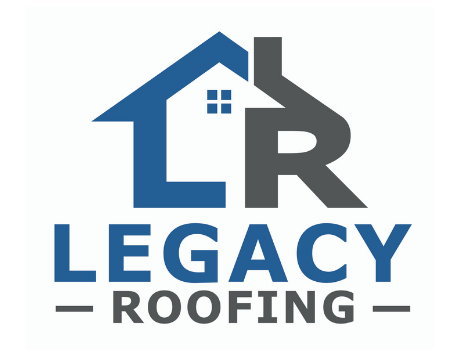Are you wondering how to tell if you need a new roof? The warning signs your roof needs to be replaced can sometimes be challenging to identify.
Your roof is the guardian over your house’s interior, a wall of defense that often gets overlooked. All good things come to an end, and as your asphalt shingle roof increases in age, so does the change you will need to have it replaced.
While we can only tell if a roof needs to be replaced by inspecting it first, today, we will discuss how to identify the signs you need a roof replacement. Ready, set, go!
6 Warning Signs You Might Need a Roof Replacement!
Sometimes, your home’s roof can give you headaches, from improper installation to an old roof. While we hope that is not the case, we do aim to help you identify the top issues with your home’s roof covering (if you happen to have some).
A full roof replacement is a big purchase for homeowners, and your roof’s shingles tell a story about what is going on. Here are six of the most common warning signs that it might be time to replace your roof surface!
1. The age of your roof
Just like old cars eventually die, your roof hits a performance barrier preventing you from enjoying the comfort of a dry home. While a small leak is something a minor roof repair can cover, an asphalt shingle roof that is older than 15 and causing issues is often the number one reason to replace your roof.
We always tell our Boise and Treasure Valley residents that the best way to evaluate the condition of their roof is not to just look at it but to factor in its age. Home improvement records are great ways to keep on top of your home’s roof, and if you are unsure of its age, you can always have a roofing professional like Chuck and Legacy Roofing come to inspect your roof.
2. Vegetation growing on the Roof (Mold, Airborne Algae, and Moss)

Do you think the stains on your clothes are nasty? While they may look bad, roof stains are not just an eyesore… they are a sign that your roof is attracting organic buildup like moss growth. Getting your roof cleaned might seem funny, but when moss, algae growth, and mold begin to form on your roof, this problem must be addressed!
Often, apparent signs of roof leaks and exposed parts of your roof to moisture can be found in mold, algae, and moss spawning. Loose, damaged, or missing shingles can trap moisture, giving these three life to spawn. If mold or moss are left untreated, roof leaks can accumulate and begin eating at your roof’s structural components, like roof boards, causing them to rot and further damage your roof.
Also, algae can cause dark streaks on your roof, making it have lousy curb appeal. This is very important! While removing moss and algae and treating the mold may be viable, there is no need for costly repairs when you can plan ahead!
3. Leaks in the attic

A leaky roof is a pain, and especially in your attic, you’ll be able to clearly see signs of leaks by moisture marks and water stains. Leaks build up over time and often cause your roof and ceiling to begin to sag and disintegrate. A properly ventilated roof, especially during the summer, can deter excess moisture build-up. Use roof cement to patch up a roof leak if you find one!
Here’s something fantastic! What to lower your energy bills? A properly installed roof fan can help regulate the temperature in your attic, reducing what you pay out of pocket each month. Just remember, where damp rafters exist, you have a problem you need to handle!
4. Damaged Roofing Material: Missing shingles and loose granules

Your roof shingles will fall victim to the elements brought on by strong winds, hail damage, and ice dams in the winter, which can damage your gutters and leave your shingles and shingle granules a thing of the past!
Damaged shingles lose granules and expose your roof’s most vulnerable parts, as well as damaged chimney flashing.
Over time, this can lead to a complete roof replacement as the number of roof repairs required will grow in intensity. Tend to your existing shingles to prolong their life expectancy. It saves time, money, and peace of mind in the long term!
What should you look for as a homeowner?
- Curling shingles
- Missing shingles
- Cracked shingles
- Shingles in your yard
- Granules in downspouts
- Flashing missing
- Leaks in your house
- Obvious roof damage
- Tear(s) in shingles
- Signs of roof damage
5. Your roof is in the last phase of the roof cycle

Roofs generally last 20-50 years, depending on the roofing material used. While metal roofs last longer, most roofs are made of asphalt shingles, which have a typical life expectancy of 20 years, give or take.
Around the 15-year mark, asphalt shingle roofs tend to enter the final stay of their life expectancy, which can mean you could start to see issues spring up. Some homeowners prefer to replace their roof before a problem arises. Either way, whatever your personal choice is, whether you have roof damage or want to be proactive, a common sign it is time to replace your shingles is the age of your roof.
See our recent article on “Phases of the Roof Life Cycle” here!
6. Roof decking issues

Ask any roofing contractor about roof decking issues, and they will have stories that will make you never want to let a roof leak go unchecked again! Unlike most of the visible damage we have already discussed, roof decking issues are hard to spot. Trapped moisture left unchecked wreaks havoc on internal roofing materials and structure, leading to a rotting roof and a complete breakdown.
A typical roof replacement consists of replacing the roof system and inspecting the roof decking. If you notice sagging spots, dark stains from within the attic, or holes in your roof, you must replace your roof’s decking (plywood), which accompanies a brand-new roof. Sometimes, the roofing contractor you hire can perform a specialized roof repair. Keep in mind that roof repair costs can vary.
FAQ:
1. How often should I need a new roof replacement?
This is a tricky question as there are variables to consider! Remember that homes have different roof materials and composition, ages, exposure to various elements, and track records of quality maintenance, as mentioned above. However, it is generally estimated that keeping everything constant, 20-50 years, is a manufacturer’s educated guess on life span.
Other factors that could negatively affect the roof replacement rate include:
- Quality of installation
- Roof leaks
- Propensity to lose granules
- Small holes in your roof with light coming through
2. Roofing materials: What is the best roofing material in Idaho?
Roofing material options vary depending on the marketplace, but asphalt shingles take the reigns! While asphalt shingles are a commonplace option, they are typical for a reason: their durability, multi-faceted dimensions, and long life. Most residential homes in Idaho have them, and you probably do as well.
Your house may need to explore different options, and if that’s the case, more power to you! Asphalt shingles certainly are not a one-size-fits-all solution.
3. How much do new roofs cost?
As a homeowner, the most critical question you will have is the cost of a new roof. Whether you are looking to minimize repair costs or you can’t wait any longer to replace your roof, a new roof generally costs $15,000, according to national averages for a single-family home.
4. How do you spot metal roof damage?
Unlike asphalt shingles, where you can notice missing or damaged components, metal roofs have a different set of warning signs to keep an eye on. While most roofs need a professional inspection, metal roofs that show hail damage, peeling paint, missing pieces, or cracks can be signs it is time for a new roof. Like all roofing materials, a basic inspection of your metal roof can help ensure it functions properly.
5. How do you hire a roofing contractor/roofing company?
Hiring a roofing company today doesn’t require too much thought, as your preferred search engine can find one for you! Creating a list, comparing, and following up with questions about services that can best determine a fit is always recommended.
Always ask these questions:
- Are they licensed?
- Are they insured?
- Are they a shingle master?
- Do they have excellent reviews?
Be sure to always do your due diligence now. In the Boise area, there can be less-than-reputable roofing contractors who will sell you a cheap roofing system that only lasts a few years. See more roofing contractor hiring tips here!
What’s the Verdict?
The upside of a new roof is curb appeal and future resale value. If you want to maximize your roof’s performance, it is crucial to keep the roof surface clean and repair any issues you see immediately. However, if you miss out on proper upkeep or you just bought a home with an old roof, hopefully, these common signs of roof issues can help you with a re-roof project (if needed).
Feel free to contact us at any time by reaching out below. If you want to learn more about asphalt roofing shingles, be sure to read our guide here.


 What is Boise Known For? 7 Top Attractions, Activities, and More!
What is Boise Known For? 7 Top Attractions, Activities, and More!